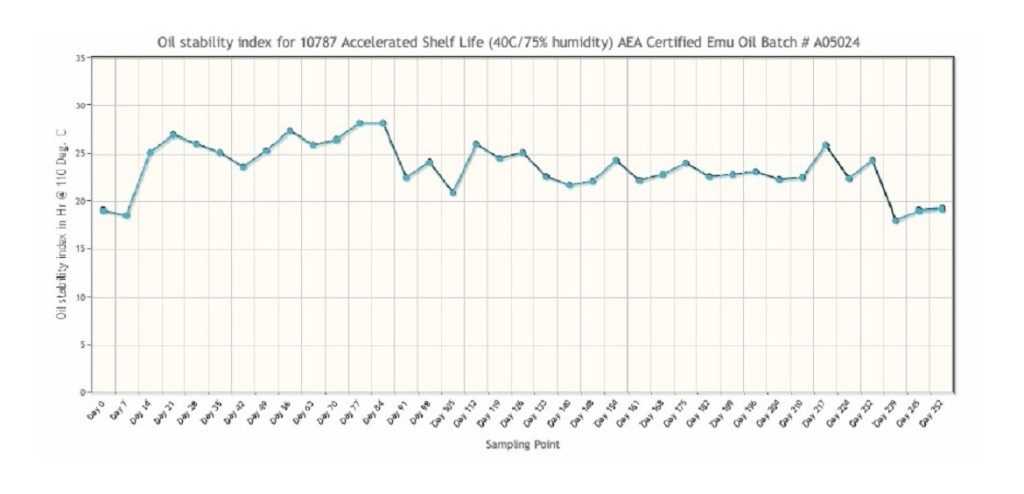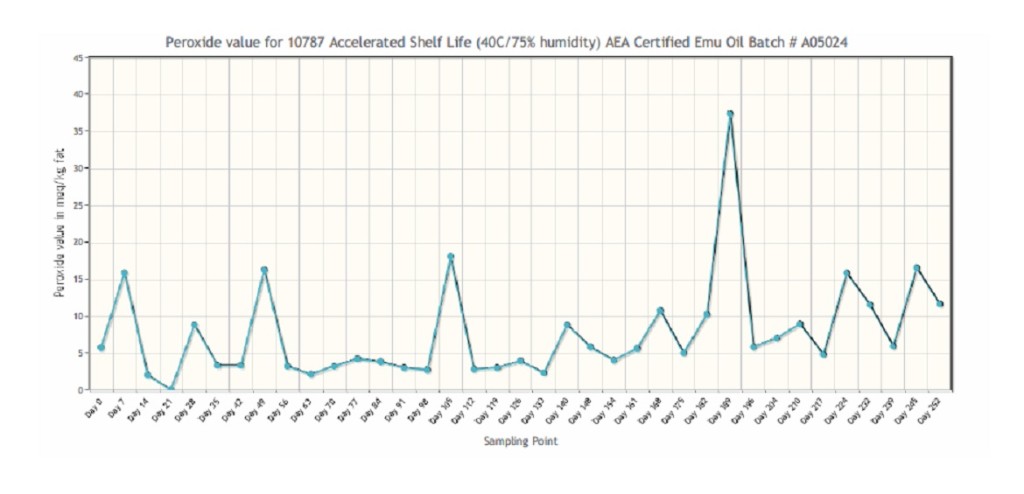Study Determines Extended Shelf Life
- August 28, 2015
- 0 Comments
- LBPadmin
- Category: Research
Shelf life of emu oil is very important for the cosmetic and dietary supplement industry. In order to have a quality cosmetic and dietary supplement product, emu oil must be in its most stable state
Emu Oil Stability Study to Determine Shelf Life
Shelf life of emu oil is very important for the cosmetic and dietary supplement industry. In order to have a quality cosmetic and dietary supplement product, emu oil must be in its most stable state. Without protecting stability, emu oil can have a rancid or unfavorable odor.
The standard protocol for fats and oils is to look at peroxide value and free fatty acids for stability. With proper processing, emu oil is very stable oil. If moisture is not removed to below 0.05%, then free fatty acids can form. Free fatty acids are formed when moisture splits fatty acids. Free fatty acids will affect stability. Also, moisture can lead to bacteria growth. Metals will also lower the stability. If metals are present, then the oil will have a short shelf life.
The fat and oil industry has developed an analytical test to look at stability. The test is called Oil Stability Index (OSI). This is an accelerated test for stability. The test heats a sample of the oil to 100° C and measures how fast the peroxide value (PV) will rise to 100.
Typical refined vegetable oil will have an OSI better than 10 hours. Emu oil that has been properly processed to ensure moisture, free fatty acid, proteins, and metals have been removed will have an OSI above 10.
We have found that AEA Certified Emu Oil™ will typically have a value in the range of 15 to 30 OSI.
How is ‘months of shelf life’ determined in the OSI value? This is done by an accelerated stability study using a controlled environment chamber. The temperature is set at 40° C and 75% humidity. Samples will be pulled each week to measure the peroxide value and OSI.
Study Protocol:
Emu oil was processed by Physical Refining.
Forty-one 4-oz. samples of emu oil were pulled from deodorizer. Two samples were sent to an AOCS lab for a complete analytical report. Thirty-seven samples were sent to an independent, food analytical lab.
An initial sample was tested by the food analytical lab and the remaining samples were placed in a controlled environment chamber with temperature set at 40° C and humidity at 75%. Each week of testing is equal to one month at room temperature.
Results:
The AOCS lab tested sample A05024 as:
Free fatty acid – 0.03%
Moisture – 0.02%
OSI – 30.45 Hours @ 110.0° C
Peroxide Value – 0.3
The food analytical lab measured sample A05024 for the OSI and PV once a week for 36 weeks.


Conclusion:
AEA Certified Emu Oil™, being properly processed, showed to be very stable. After 36 weeks of testing samples, the peroxide value was in at 11.6 and an OSI of 19.2. These results concluded a shelf life of three years plus. The study was stopped at the equivalent of three years; however peroxide value and OSI were still at levels where quality of the oil was maintained.

